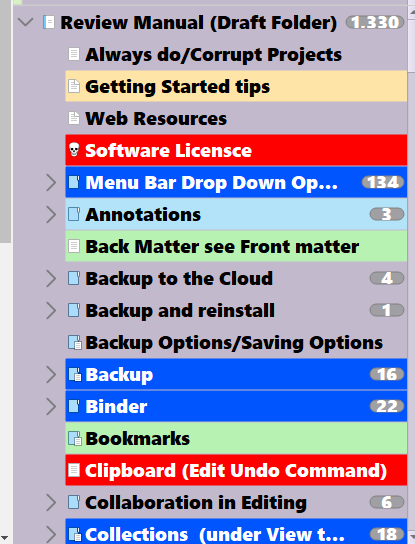You may be confusing me with someone else, or referring to a different post.
I’ve never heard the term ‘document mode’ so I’ve never commented on it. I was only speaking about Scrivenings mode and functionality within that based on toggling the icon.
All Jim said was a repeat of what I said, using slightly-different words. Probably better words. And all that was said was exactly about the function of the Scrivenings mode itself.
Thanks for the recommendation on the book. Seeing as how the preview reveals that it is written in giant block paragraphs with very little white space, the TOC doesn’t seem to cover anything I don’t already understand, and there were multiple typos (such as the word ‘the’ being represented by ‘De’) indicating it likely was never proofread, my best guess would be it wouldn’t be worth my time and effort.
No one knows everything about Scrivener (other than Keith, most likely), and this includes everyone who writes books about it based on what they’ve learned from using it out of all the things that can be learned about it. I’m certainly in no position to write such a book, but I know enough to get by, having used the program seven hours a day every day for the last five years, having watched all the videos (all of which are terrifically well done), having struggled many times with the 1000-page overwritten instruction manual which is inexplicably in PDF form which makes it extremely difficult to search for anything, and having taken multiple online courses about it.
And I certainly don’t understand and don’t feel the necessity to apologize for not knowing all the lingo and buzzwords (it’s complex enough to apparently need its own language), which is why I could not be more precise in my efforts to help you.
Since my goal is to write instead of learn all that is possible to learn about Scrivener, which might take a lifetime, I’ve chosen to spend my time writing. When I get flummoxed by something in Scrivener, I come here, first, and I usually find an answer among all the non-answers.
